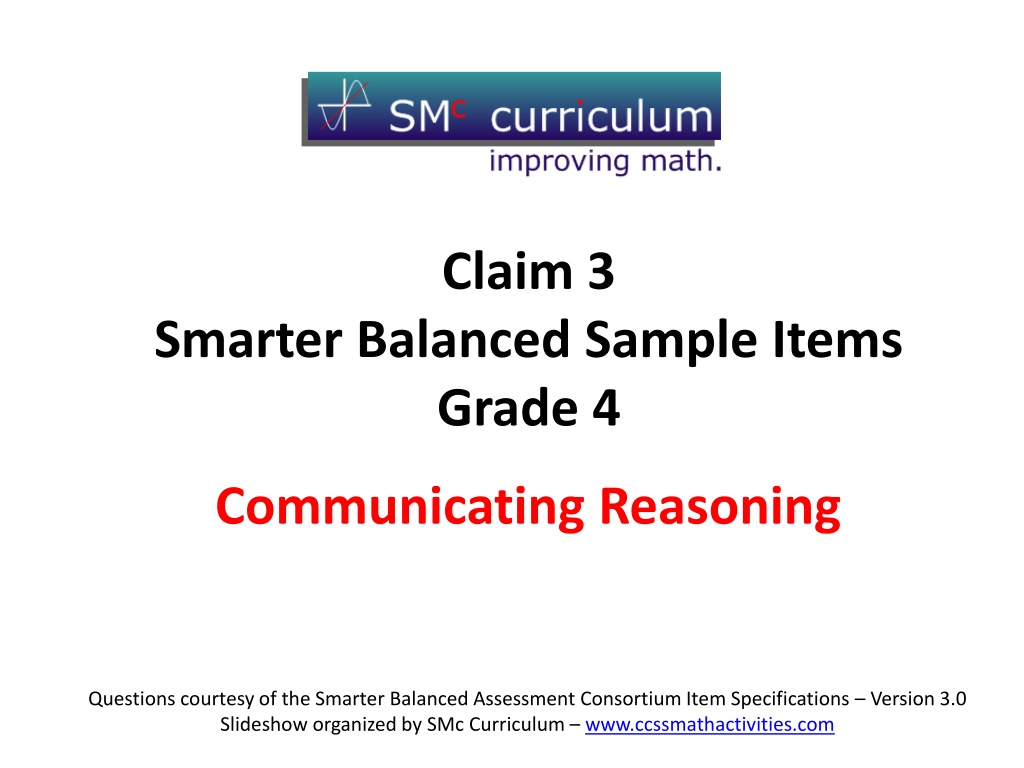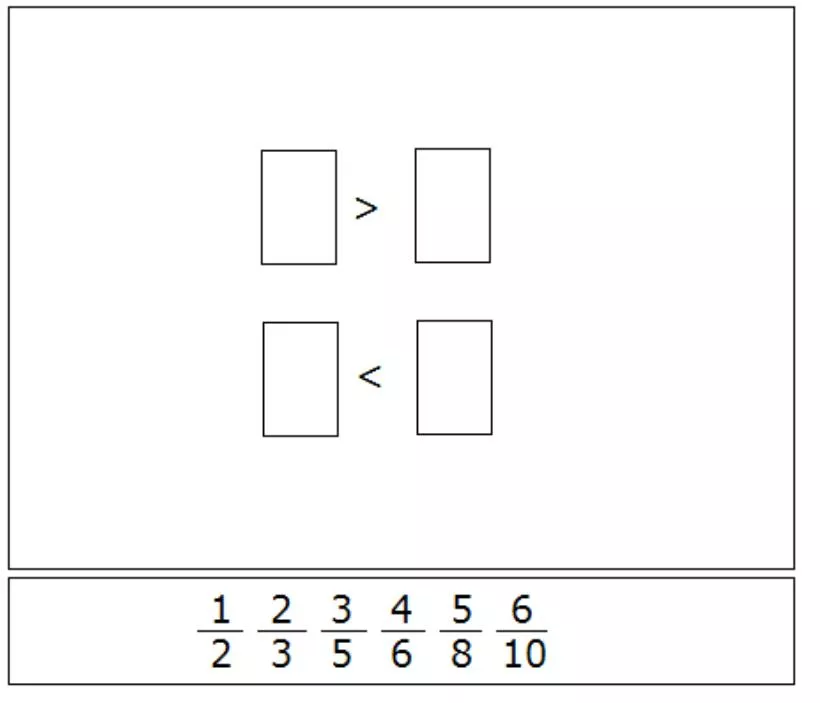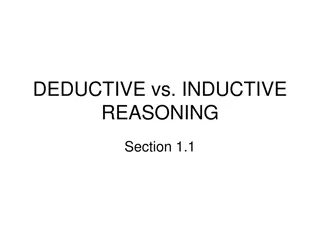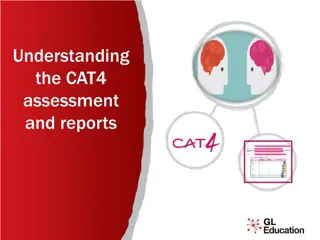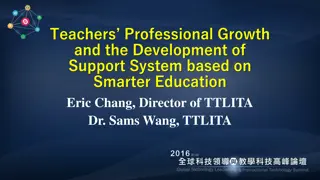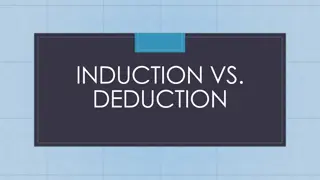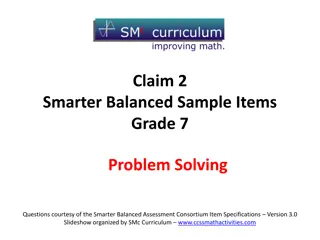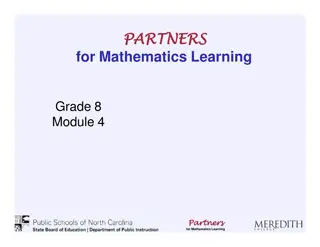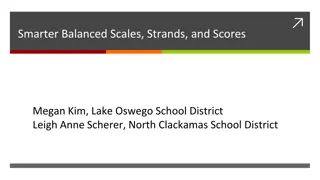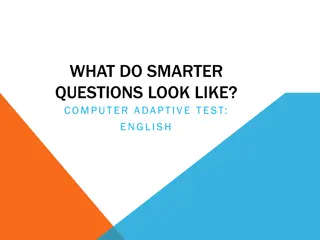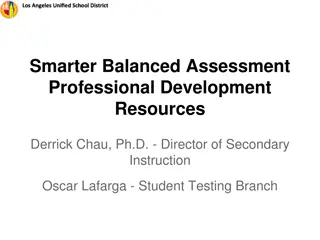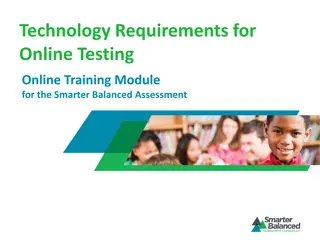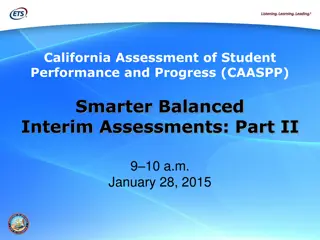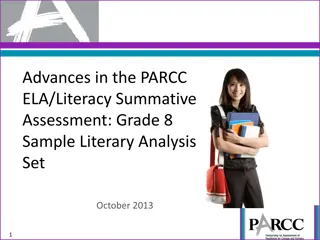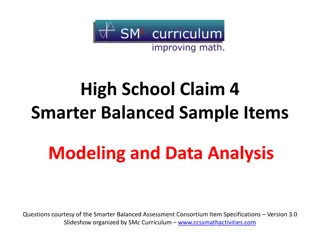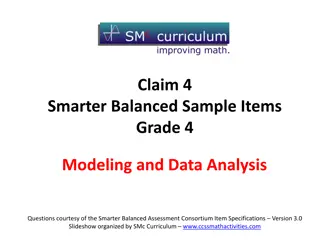Grade 4 Smarter Balanced Sample Items for Communicating Reasoning
Explore interactive questions from the Smarter Balanced Assessment Consortium for Grade 4 students to practice communicating reasoning skills. Questions involve creating comparisons with fractions, completing number statements, identifying correct conditions in arguments, and solving math problems using reasoning. Engage in activities designed to enhance critical thinking and mathematical communication.
Download Presentation

Please find below an Image/Link to download the presentation.
The content on the website is provided AS IS for your information and personal use only. It may not be sold, licensed, or shared on other websites without obtaining consent from the author. Download presentation by click this link. If you encounter any issues during the download, it is possible that the publisher has removed the file from their server.
E N D
Presentation Transcript
Claim 3 Smarter Balanced Sample Items Grade 4 Communicating Reasoning Questions courtesy of the Smarter Balanced Assessment Consortium Item Specifications Version 3.0 Slideshow organized by SMc Curriculum www.ccssmathactivities.com
#1 Drag one fraction to each box to create two true comparisons.
#1 Answer Rubric: (2 points) The student creates two true comparisons. (1 point) Partial credit is possible for creating one true comparison. 2 3>1 2, 6 10<5 Possible A?????: 8
#2 Drag numbers into the boxes to make each statement true. You may use numbers more than once. 5 > 5 5 < 5 5 = 5
#2 Answer Rubric: (2 points) The student is able to complete all three comparisons correctly. (1 point) The student is able to complete 2 out of 3 comparisons correctly. Note: Multiple responses are possible and will need to be listed for scoring. Possible Answer: 6 5, 4 5, 5 5
#3 Answer Rubric: (1 point) The student identifies all the correct conditions that make the argument true. Answer: C and D
#4 Pablo solved a multiplication problem using two different methods. He made a mistake in either Method W or Method Z. Which method was solved incorrectly, and where did the mistake first occur? A. Method Z because 2 hundreds should have been added to the hundreds column Method Z because only two numbers should be added together, not four numbers Method W because only 1 ten should have been added to the product of 20 and 9 Method W because 1 hundred should have been added to the product of 20 and 40 B. C. D.
#4 Answer Rubric: (1 point) The student selects the correct response. Answer: D
#5 William shaded 6 squares in a grid to make the figure shown. Part A. Click to shade one more square so the perimeter is greater than the original figure. Part B. Click to shade one more square so the perimeter is less than the original figure. He claims that if he adds 1 more square to this figure in different places, the perimeter can be greater than, less than, or equal to the perimeter of the original figure. Part C. Click to shade one more square so the perimeter is equal to the original figure.
#5 Answer Rubric: (2 points) The student is able to provide an example that supports each conjecture. (1 point) The student is able to provide two out of three correct examples. (0 points) The student is unable to provide at least two correct examples. Answer: For Part A, the perimeter has to be greater than 14 units. For Part B, the perimeter of the figure has to be less than 14 units. For Part C, the perimeter of the figure has to be equal to 14 units.
#6 Click in the box that matches each division problem to the correct claim.
#6 Answer Rubric: (1 point) The student matches each quotient to the appropriate claim. Answer: Claim 2: 200 5and 108 9 Claim 3: 777 7
#7 Carter says, 8000 is 100 times as large as 80. 1. 2. Choose three statements that support this claim. 3. So 8000 is 100 times as large as 80. 80 is 10 times as large as 8. 800 is 10 times as large as 80. 8000 is 10 times as large as 800. 10 10 = 100 10 100 = 1000 80 10 = 800 800 10 = 8000 Drag them into a logical order in the box.
#7 Answer Rubric: (1 point) The student selects three statements that complete an explanation for the claim and puts them in a logical order. In this particular example, the order doesn t matter. Answer: Examples: 1. 800 is 10 times as big as 80. 2. 8000 is 10 times as big as 800. 3. 10 10 = 100 1. 80 10 = 800 2. 800 10 = 8000 3. 10 10 = 100
#8 Rectangle A is 4 times as long as rectangle B. 1. Rectangle B is 3 times as long as rectangle C. 2. 3. 4 x A = B 4 x B = A 3 x B= C 3 x C = B 4 x (3 x C) = A 3 x (4 x C) = A How many times greater is rectangle A than rectangle C? times Choose three equations that, when taken together, support your claim. Drag them into a logical order in the box.
#8 Answer Rubric: (2 points) The student enters the correct multiplicative factor in the response box and selects three statements that support the claim and puts them in a logical order. (1 point) The student does one or the other. Answer: 12 times Examples: 1. 4 x B = A 2. 3 x C = B 3. 4 x (3 x C) = C 1. 3 x C = B 2. 4 x B = A 3. 4 x (3 x B) = A
#9 There are 60 seconds in a minute. There are 60 minutes in an hour. There are 24 hours in a day. What is the total number of minutes in 1 day? Enter your answer in the first response box. Write an expression that shows how you found your answer. Enter your expression in the second response box.
#9 Answer Rubric: (2 points) The student enters the correct number of minutes in a day in the first response box and a correct expression in the second response box. (1 point) The student enters the correct number of minutes in a day in the first response box or a correct expression in the second response box. Answer: 1440; 60 x 24 or 144 x 10 or equivalent expressions.
#10 When you cut an obtuse angle into two smaller angles, what can be true? (Select all that apply.) A. The two smaller angles can be less than 90 degrees. B. At least one of the two smaller angles can be greater than 90 degrees. C. Both of the two smaller angles can be greater than 90 degrees.
#10 Answer Rubric: (1 point) The student selects the possible cases. Answer: A and B
#11 What must be true about d to make this inequality true? 3 ? 3 10 Identify which values of d make this equation true.
#11 Answer Rubric: (1 point) The student identifies the correct values of d Answer: T, T, F
#12 Which statement best describes Harvey s claim? A. Harvey solved the problem correctly and got the right answer. B. Harvey made a mistake in solving the problem but got the right answer anyway. C. Harvey had a correct way of solving the problem but got the wrong answer. D. Harvey s solution is not correct because he did not multiply the tens with the ones. Harvey was solving this problem: There are 12 packets of gum each with a mass of 65 grams. What is the mass of all of the packets combined? Harvey said, I can multiply the tens places and the ones places and add them. Then he wrote: 12 = 10 + 2 65 = 60 + 5 600 + 10 = 610 The total mass is 610 grams.
#12 Answer Rubric: (1 point) The student selects the correct statement. Answer: D
#13 Zach and Nate both rounded 6481, but used different methods. Zach thought about it this way: 6481 rounds to 6480 6480 rounds to 6500 6500 rounds to 7000 So 6481 rounds to 7000. Nate thought about it this way: 6481 is closer to 6000 so it rounds to 6000. Which statement best describes these methods? A. Zach s method is correct. B. Nate s method is correct. C. Both methods are correct. D. Neither method is correct.
#13 Answer Rubric: (1 point) The student selects the correct method. Answer: B
#14 Which number line shows that 3 4=6 8?
#14 Answer Rubric: (1 point) The student selects the correct number line. Answer: A
